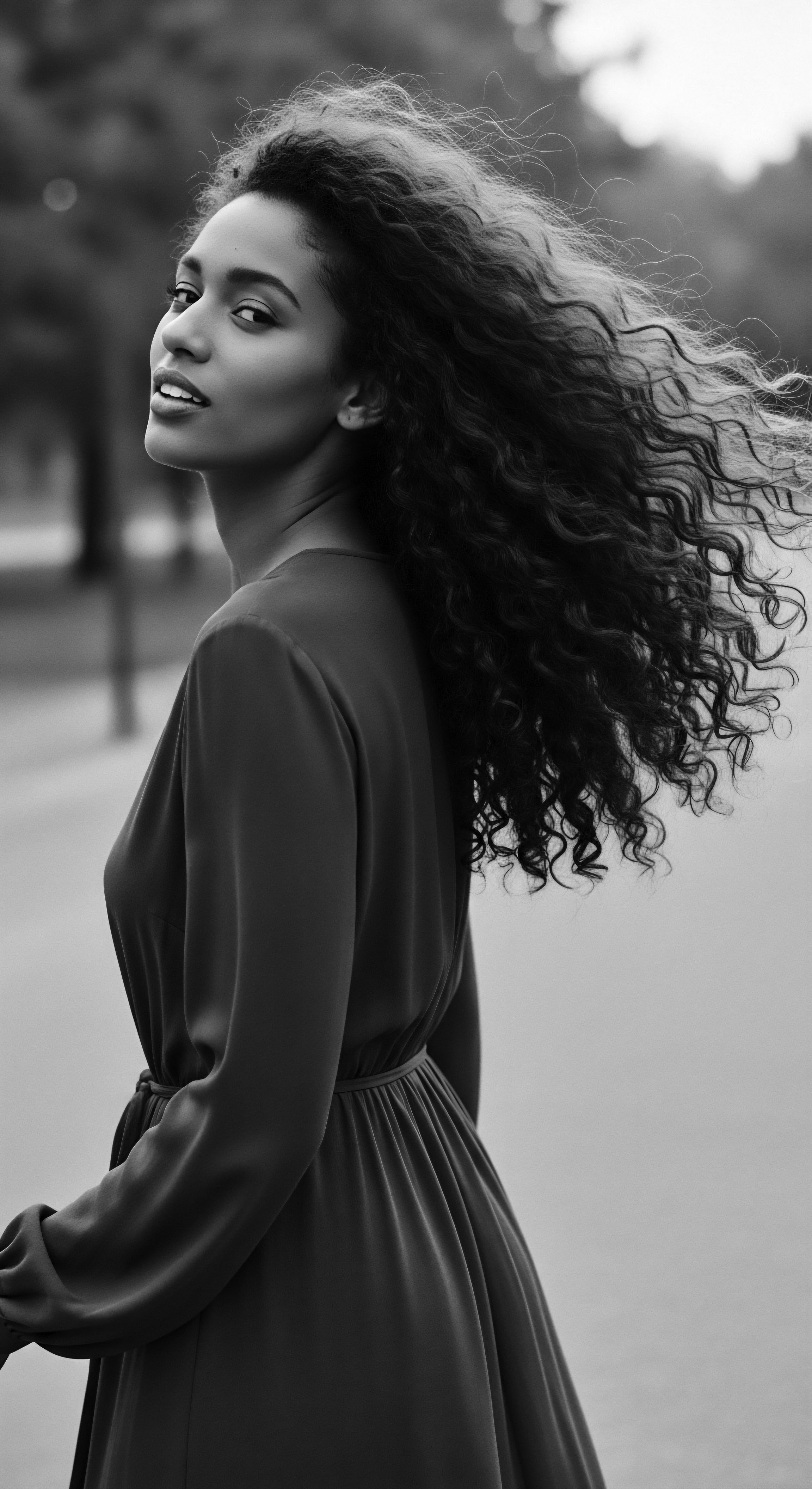
Roots
There exists a profound connection between the strands that crown our heads and the echoes of generations past. For those of us whose hair tells stories of coil and curve, of resistance and strength, the question of how a simple oil might bring forth moisture runs deeper than surface chemistry. It calls us to consider a heritage, a legacy of care passed down through the ages, often whispered between kin, refined across continents.
Ancestral hair oils, more than mere emollients, represent a profound testament to ancient wisdom, a knowledge born from living intimately with the earth and understanding its gifts. They are the liquid memory of traditions that saw hair not as a challenge, but as a sacred extension of self, a conduit to spirit, a vibrant marker of identity.
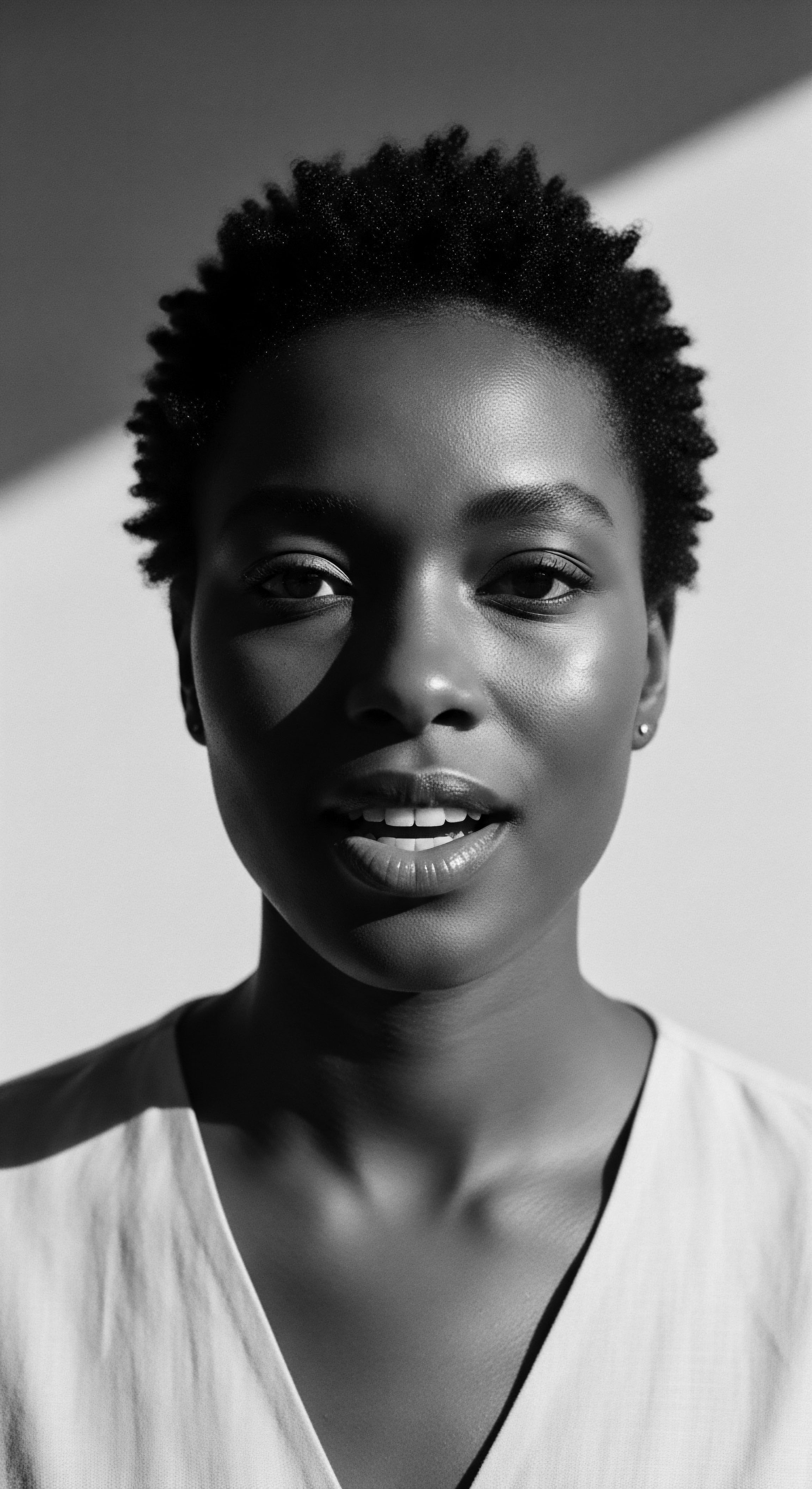
The Architecture of Textured Hair
To truly grasp the hydrating power held within ancestral oils, we must first look to the very blueprint of textured hair. Unlike its straighter counterparts, the hair we carry – with its intricate twists and turns – possesses a unique physiology. Its elliptical shaft, varying in shape along its length, dictates the degree of curl, from gentle waves to tightly coiled patterns. This very geometry means the hair’s outermost layer, the Cuticle, tends to be more raised.
Picture it as overlapping shingles on a roof; when those shingles are not lying flat, moisture can escape with greater ease, and the internal structure, the Cortex, becomes vulnerable to environmental changes. This innate tendency towards dryness is not a flaw, but a characteristic that demands a specific, thoughtful approach to moisture retention.
Generations of observation, long before the advent of microscopes or molecular diagrams, led our forebears to an intuitive understanding of this very challenge. They saw hair that yearned for sustenance, that thrived when shielded from harsh elements. Their solutions were drawn directly from the abundance of their immediate surroundings, carefully selected plants and fruits whose very oils promised a balm, a seal, a source of life for thirsty strands. This early botanical discernment forms the very bedrock of our discussion.
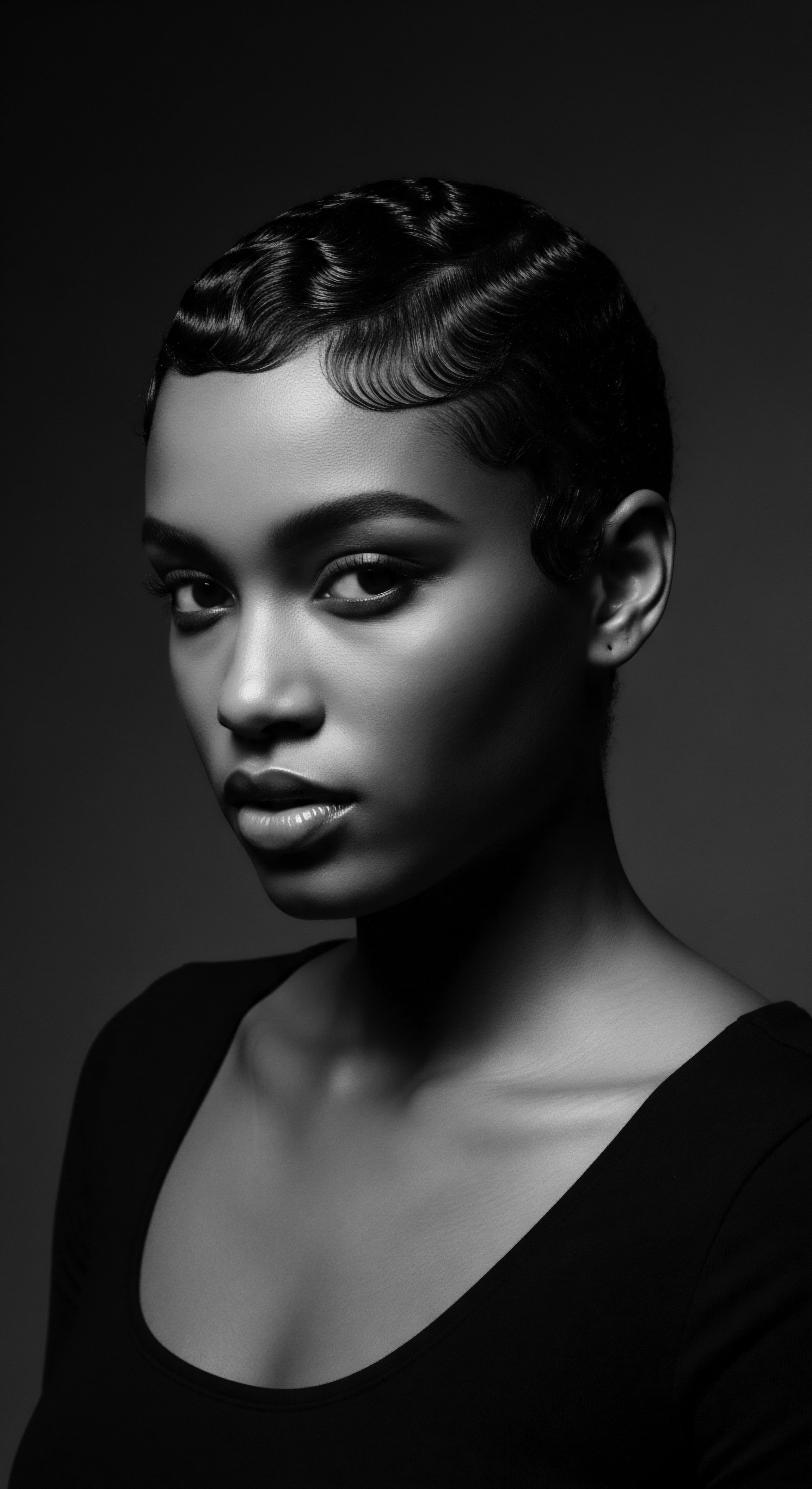
What Makes Ancestral Oils Different?
The efficacy of these time-honored oils rests not solely in their physical application, but in their intrinsic molecular composition. Consider the richness of Shea Butter (Vitellaria paradoxa), harvested from the nuts of the African karite tree. Its dense, creamy texture arises from a complex profile of fatty acids – oleic, stearic, linoleic – alongside unsaponifiable lipids, which means they are not converted into soap during saponification. These components bestow upon it a significant occlusive property, forming a protective barrier on the hair surface that slows moisture evaporation.
This barrier acts as a shield, preventing the precious water absorbed from conditioners or the atmosphere from vanishing into the air. Similarly, Coconut Oil (Cocos nucifera), a staple across tropical regions, especially prominent in South Asian and Pacific Island communities, holds a unique distinction. Its predominantly saturated fatty acid content, particularly lauric acid, gives it a linearity and a relatively small molecular size. This allows it not only to coat the surface but, quite uncommonly among oils, to penetrate the hair shaft itself, reaching the cortex.
Ancestral oils, born from generations of observation, offer a deep legacy of hydration for textured hair by creating protective seals and penetrating the hair shaft.
This penetration is significant. When an oil can move beyond the cuticle and into the hair’s interior, it helps to fortify the strand from within, reducing protein loss during washing and increasing flexibility. This insight, validated by contemporary scientific inquiry, speaks volumes about the remarkable precision of ancestral practices, discovered through iterative experience and shared wisdom over countless years.
| Oil Name Shea Butter (Vitellaria paradoxa) |
| Primary Hydration Mechanism Forms a rich occlusive barrier on the hair surface, sealing in moisture and protecting from external elements. |
| Ancestral Context of Use Widely used across West and East Africa for scalp health, hair pliability, and protection against sun and dry winds. |
| Oil Name Coconut Oil (Cocos nucifera) |
| Primary Hydration Mechanism Penetrates the hair shaft (due to high lauric acid content), reducing protein loss and providing internal moisture. |
| Ancestral Context of Use Central to hair care rituals in South Asia, Southeast Asia, and Pacific Islands; applied as a pre-wash treatment and leave-in. |
| Oil Name Castor Oil (Ricinus communis) |
| Primary Hydration Mechanism High viscosity creates a thick, protective film, drawing and holding moisture to the hair and scalp. |
| Ancestral Context of Use Used in various African and Caribbean traditions for strengthening, growth, and scalp conditioning. |
| Oil Name These oils represent a fraction of the botanical wisdom passed down, each with a specific contribution to hair wellness. |

How Do Oils Interact with Porosity?
The concept of Porosity – our hair’s ability to absorb and retain moisture – is crucial when discussing the efficacy of ancestral oils. Textured hair often exhibits varying degrees of porosity, sometimes even on a single head. Hair with high porosity, where the cuticle layers are widely open (perhaps due to genetic predisposition or external factors like heat), readily absorbs moisture but struggles to hold onto it. For this hair, heavier occlusive oils like shea butter or Baobab Oil (Adansonia digitata) provide the necessary sealing action, acting as a veritable moisture blanket.
They sit atop the strand, creating a physical barrier that slows the exodus of water. Conversely, low porosity hair, with tightly bound cuticles, resists moisture penetration. For these strands, lighter, more penetrating oils like coconut oil, or indeed, warming the oil slightly before application, can assist in lifting those cuticles just enough to allow moisture to enter, before sealing it in.
This sophisticated understanding of hair characteristics, even without modern scientific terminology, was inherent in ancestral practices. They learned through careful observation which plants, which oils, best served different hair needs within their communities, a practical application of botanical chemistry that precedes formal laboratories by millennia. It reminds us that knowledge is not solely derived from textbooks, but from living, experimenting, and passing down the tried and true.
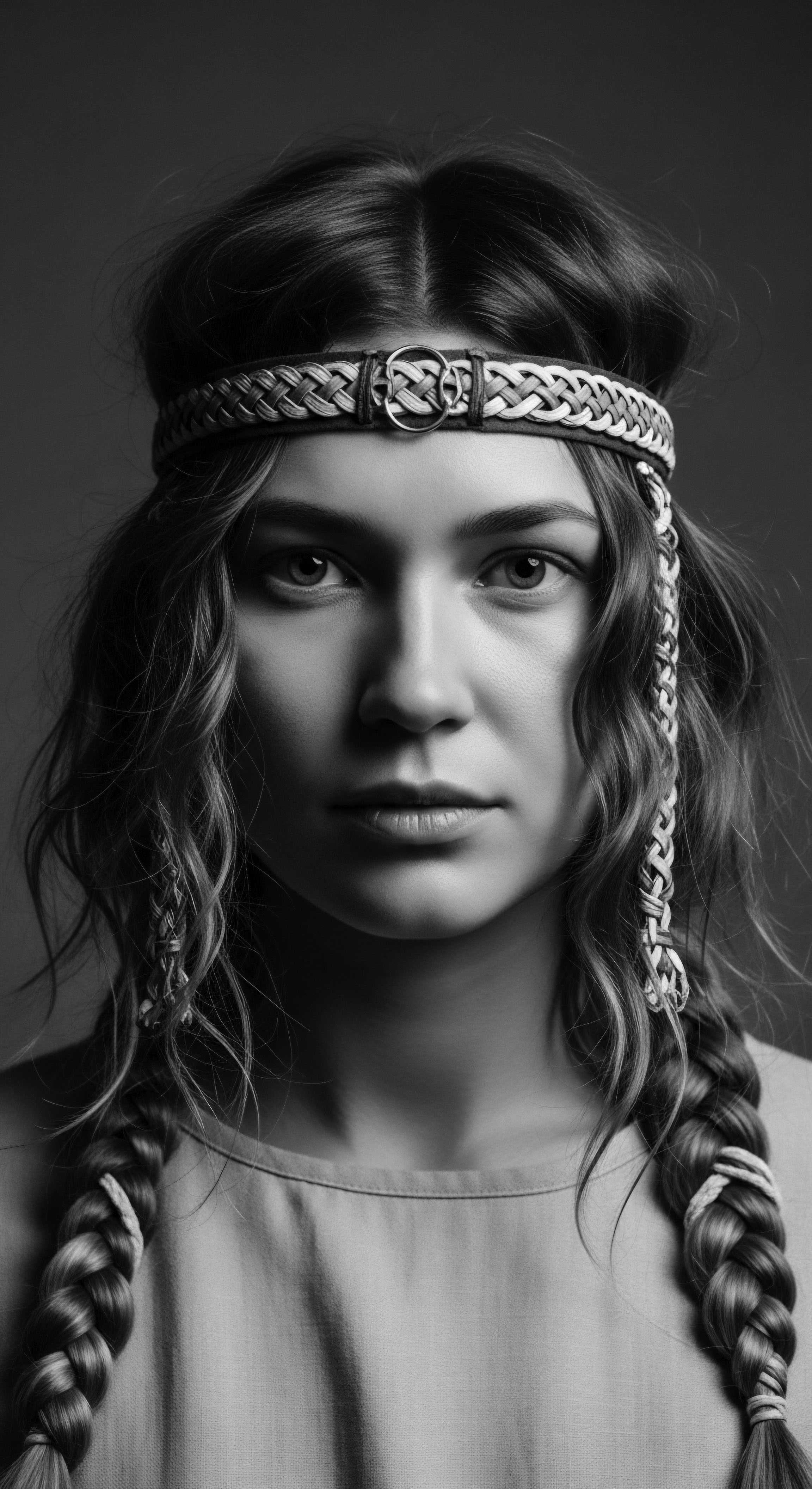
Ritual
The passage of ancestral hair oils from plant to strand was rarely a solitary act. It was often imbued with Ritual, a rhythm of care that connected the individual to family, community, and the spiritual world. These practices, honed over countless generations, were not merely cosmetic; they were deeply interwoven with identity, status, and the very fabric of communal life. The application of oils became a moment of tenderness, a quiet affirmation of worth, a continuation of inherited wisdom.

The Practice of Warm Oil Treatments
Consider the ancient practice of warming hair oils. Before scientific understanding could explain molecular expansion or improved absorption, our ancestors observed that gentle warmth transformed the experience and efficacy of these botanical remedies. A pot of oil, perhaps Moringa Oil (Moringa oleifera) in West Africa or Amla Oil (Phyllanthus emblica) in South Asia, placed near a hearth or warmed by the sun, became more fluid, easier to distribute across coils and curls. This simple act aids hydration in a significant way ❉ the mild heat helps to slightly raise the cuticle scales of the hair, allowing the beneficial fatty acids and lipids within the oil to more readily enter the hair shaft or to form a more even, protective coating.
It also stimulates blood circulation to the scalp, promoting a healthier environment for hair growth and distributing natural sebum more effectively. These were not random acts, but deliberate, purposeful motions born from generations of experiential knowledge.
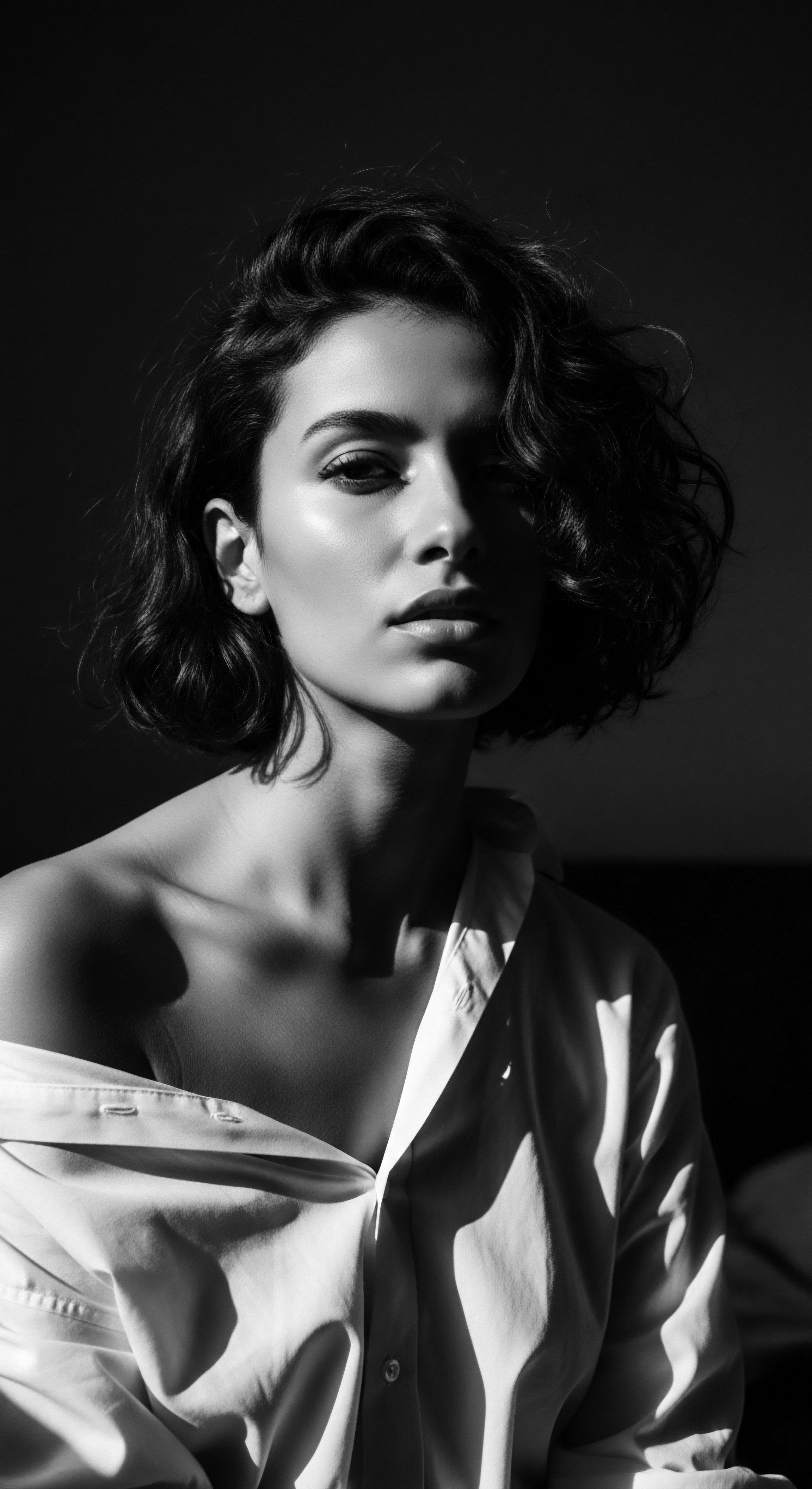
How Did Ancestral Hands Apply Oils?
The very manner of application speaks to a deep awareness of the hair’s requirements. Oiling was not a casual splash; it was a methodical process, often involving deep, circular massage into the scalp, working the oil down the length of the strands. This scalp massage, a universal element in many traditional hair care systems, serves multiple purposes. It helps to loosen dirt and dead skin cells, prepare the scalp for cleansing, and distribute the oil evenly.
For the hair itself, working the oil gently from root to tip, focusing on the more vulnerable ends, provided a protective layer. This layer shielded the hair from friction, reduced snagging, and minimized the mechanical stress that can lead to breakage, especially important for fragile textured hair. It’s a physical manifestation of care, a gentle conversation between hand and hair.
Ancestral oiling was more than simple application; it was a rhythmic ritual of scalp massage, methodical distribution, and protection, fostering both hair health and communal bonds.
In many societies across Africa and the diaspora, hair preparation and styling, which invariably included oiling, were communal events. Mothers, aunties, and grandmothers would gather, sharing stories and wisdom as they braided, twisted, or styled hair. The oil became a medium of connection, a tangible link in the chain of oral tradition and cultural preservation. These moments were living classrooms, where knowledge of herbs, oils, and hair types was passed down, ensuring the survival of these practices against the tide of assimilation or erasure.
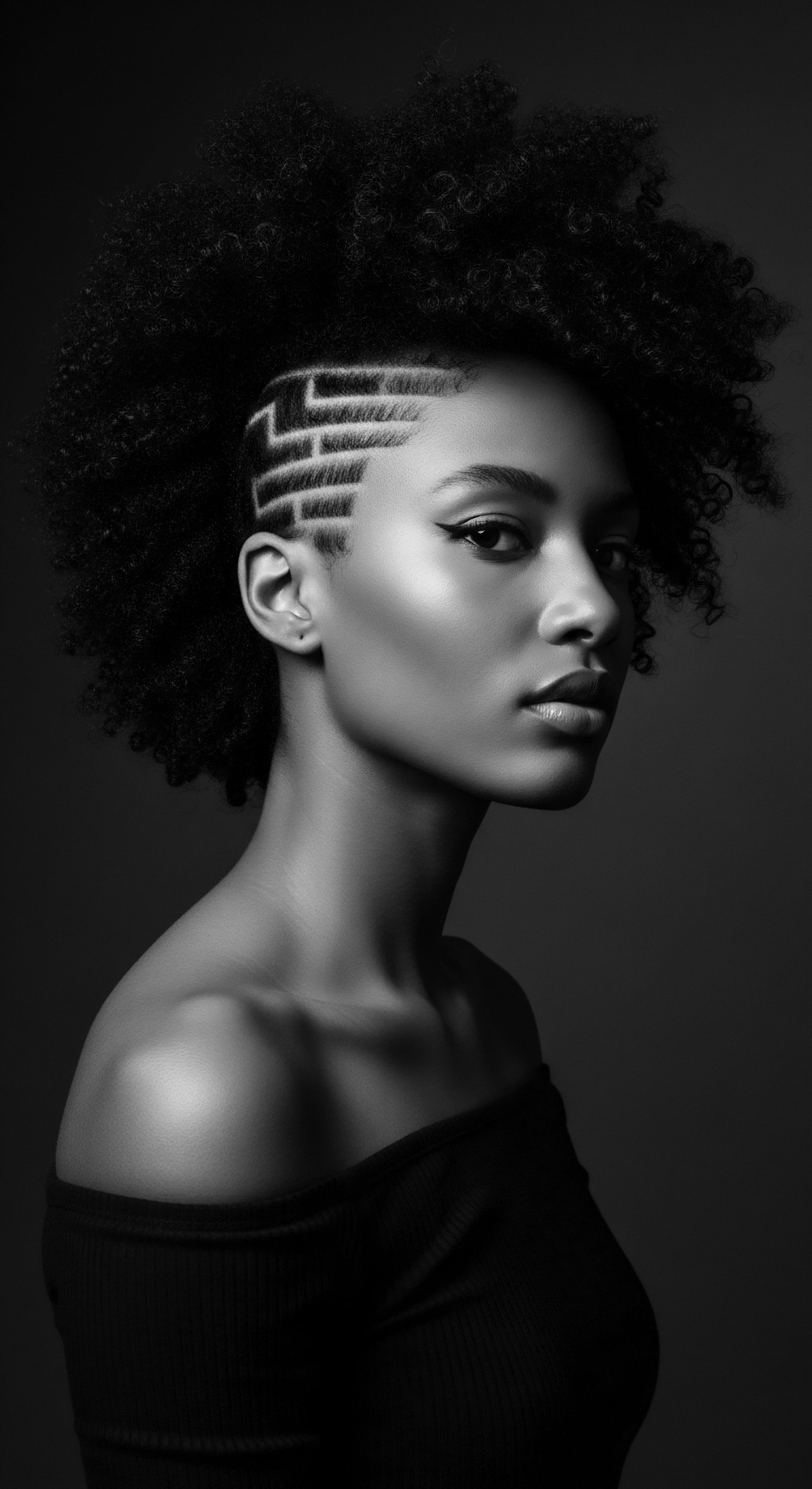
The Mbalantu Women of Namibia and Oshikwa Oil
A particularly compelling historical example of ancestral oil use, profoundly illustrating its role in hydration and heritage, can be found in the hair practices of the Mbalantu Women of northern Namibia. Their hair, known as Eembuvi, is a lifelong testament to their traditions, extending often to incredible lengths, sometimes reaching the ground. From a young age, girls begin a meticulous care routine involving a specific mixture. This concoction includes finely ground tree bark, aromatic herbs, and crucially, Oshikwa Oil, derived from the seeds of the Ximenia americana tree (also known as sour plum oil).
The Oshikwa oil is renowned for its softening and protective qualities, rich in oleic acid and other beneficial fatty acids that deliver deep moisture. The mixture is applied to the hair, and then often covered with animal fat and ochre, creating thick, weighty strands.
This continuous application, spanning decades, creates a dense, protective layer that seals in moisture, protects the hair from the harsh arid climate, and minimizes mechanical damage. The long, heavy dreadlocks are not just a style; they are a visual archive of dedication, patience, and ancestral knowledge. They represent rites of passage, marital status, and a deep connection to their heritage (Chisato, 2017).
The oil here serves as the binding, hydrating agent, allowing this incredible hair journey to unfold, strand by painstaking strand. This is not merely about aesthetic adornment; it is about identity, longevity, and a living tradition.
- Oshikwa Oil ❉ Derived from the Ximenia americana tree, this oil is a central component in Mbalantu hair traditions, providing moisture and pliability.
- Tree Bark and Herbs ❉ Finely ground botanicals are blended with the oil, adding further beneficial properties and contributing to the protective mass.
- Continuous Application ❉ Over decades, this mixture, along with animal fat and ochre, is applied, building up a protective layer that allows for extreme hair length and health.
This sustained commitment to hair care, where oil is a central component of a protective, hydrating regimen, stands as a powerful demonstration of how ancestral practices inherently understood the need for consistent moisture retention for textured hair. The wisdom was not abstract; it was lived, practiced, and visibly manifested in the hair itself.
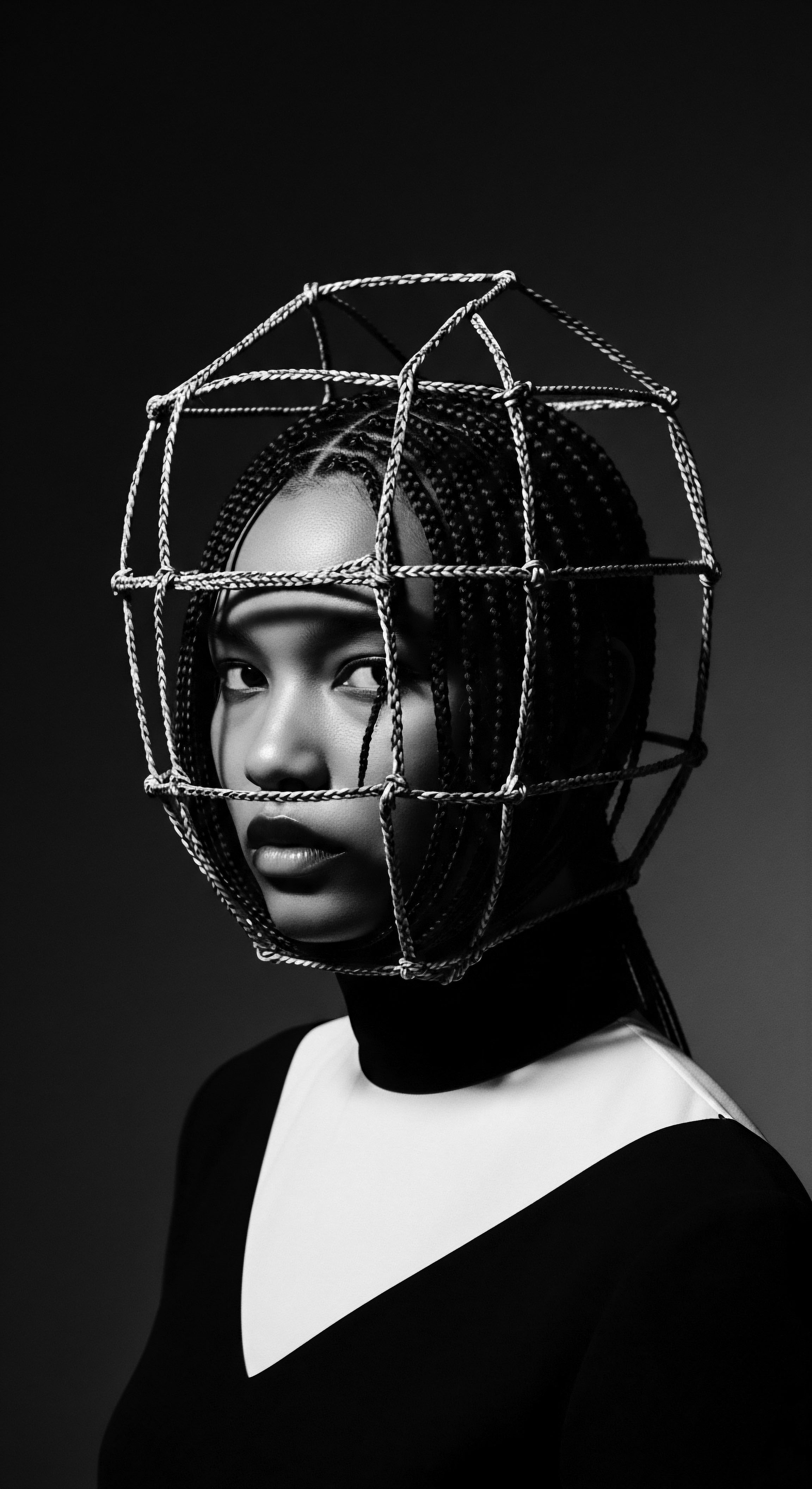
Relay
The journey of ancestral hair oils, from ancient practice to contemporary understanding, represents a powerful relay of knowledge across time and geography. This journey reveals how deeply scientific principles were embedded within traditions long before formal laboratories existed, and how these practices were adapted, survived, and indeed, thrived amidst immense cultural shifts. The efficacy of these oils in hydrating textured strands is a testament to the ingenuity and observational acumen of our forebears, a wisdom now validated and expanded upon by modern inquiry.
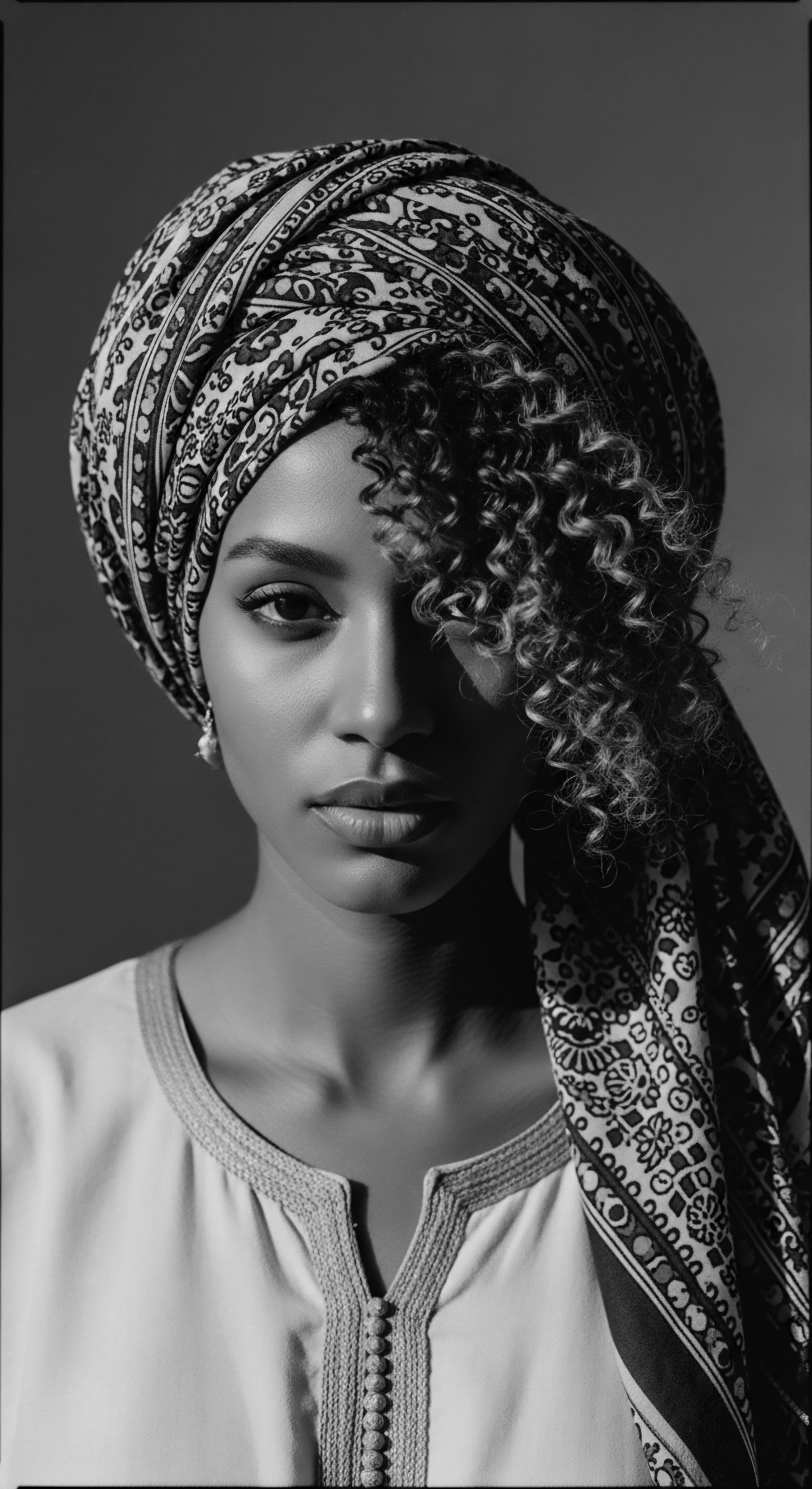
The Molecular Science of Ancient Moisture
Let us consider the chemical conversation between oil and hair at a molecular level. Textured hair, by its very architecture, typically possesses a more alkaline pH than straighter hair, and its cuticle layers, as discussed earlier, tend to be more raised. This makes it particularly susceptible to moisture loss. Ancestral oils, comprised primarily of triglycerides – esters derived from glycerol and three fatty acids – interact with the hair in distinct ways depending on their specific fatty acid profiles.
For instance, the significant hydrating capacity of Coconut Oil, a cornerstone of hair care across the Indian subcontinent and Southeast Asia, can be attributed to its high concentration of Lauric Acid. Lauric acid is a saturated fatty acid with a relatively small, linear molecular structure. This unique characteristic allows it to penetrate beyond the cuticle and into the Cortex of the hair shaft (Rele & Mohile, 2003).
Once inside, it can help reduce protein loss during washing cycles, which in turn preserves the hair’s internal structure and its inherent ability to hold moisture. This internal conditioning provides a foundational hydration that surface coatings alone cannot achieve, making coconut oil a truly exceptional agent for internal strand strengthening and hydration.
Contrast this with oils like Jojoba Oil (Simmondsia chinensis), though perhaps a slightly newer addition to the collective ancestral toolkit in some regions, its composition mirrors the scalp’s natural sebum. While it may not penetrate as deeply as coconut oil, its biomimetic qualities allow it to form a compatible, breathable layer on the hair shaft, regulating moisture loss without feeling heavy. The historical selection of oils, though empirical, often aligned with these precise biophysical and biochemical properties, showcasing an astonishingly sophisticated understanding of plant matter and hair biology.
Modern scientific inquiry consistently affirms the profound efficacy of ancestral oil application methods, underscoring the deep, empirical knowledge of hair care practiced by previous generations.
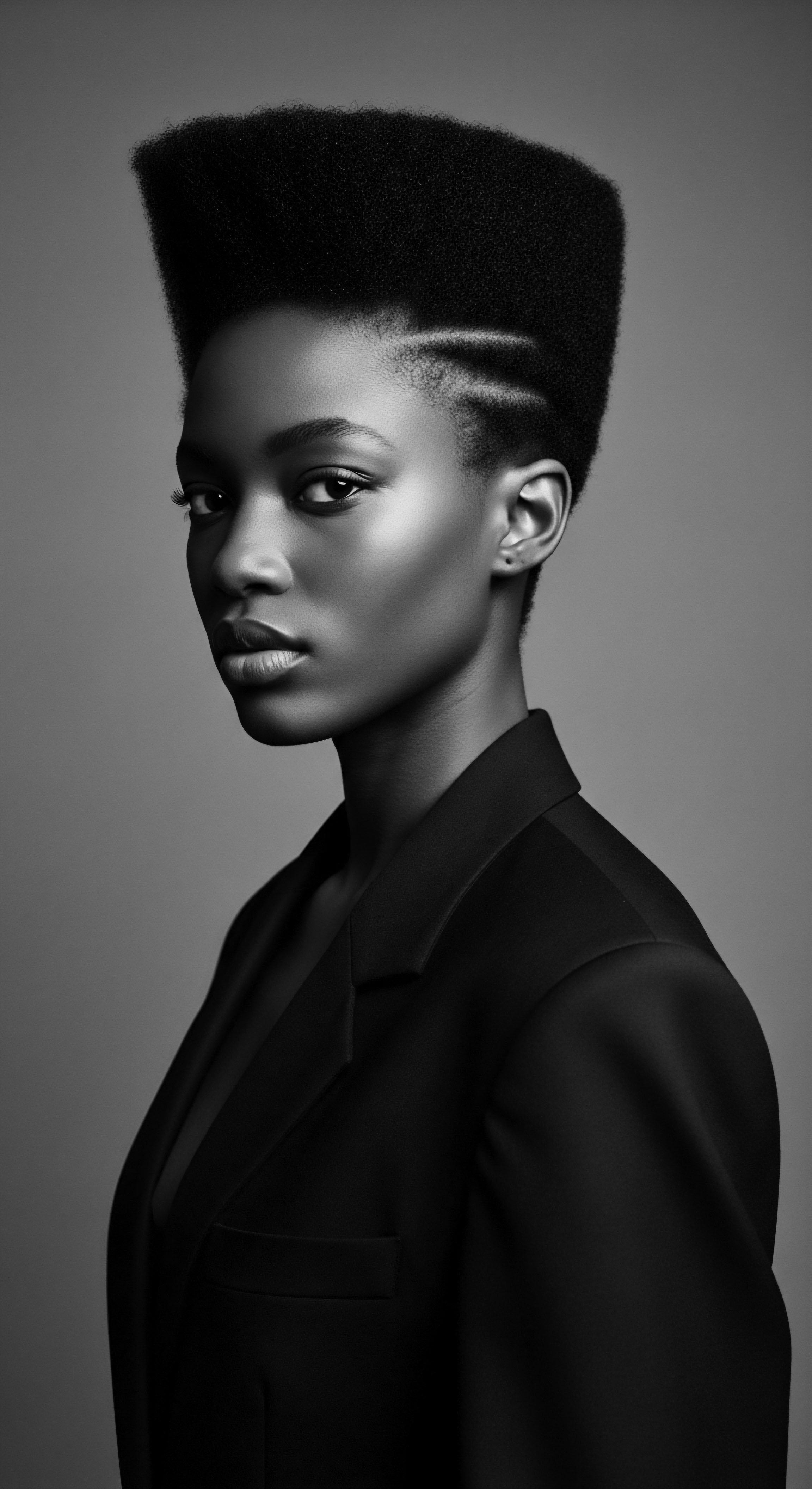
The Role of Occlusion and Emollience
Many ancestral oils excel as occlusive agents and emollients. An Occlusive substance forms a physical barrier on the surface, preventing water from escaping into the environment. Think of shea butter, with its rich, unctuous texture. Applied to textured strands, it creates a robust seal, reducing transepidermal water loss from the hair and scalp.
This is particularly vital in arid climates or for hair prone to significant moisture depletion. As an Emollient, the oil softens and smooths the hair, filling in gaps in the cuticle, thereby making the strands feel more pliable and less prone to tangling and breakage. The combined effect is one of sustained hydration and improved manageability. This dual action was intuitively leveraged in hair practices that sought to protect hair from sun, wind, and mechanical damage, maintaining its vitality and health over long periods between washes.
The practice of leaving oils on for extended periods, sometimes overnight or for several days, also highlights this understanding. This prolonged contact allows the oils to work synergistically with the hair’s natural moisture, creating a sustained environment of hydration that profoundly benefits textured strands, known for their tendency to dry quickly.

How Do Practices Adapt Across the Diaspora?
The legacy of ancestral hair oils is not static; it is a dynamic tradition that has adapted and persisted across the African diaspora and Indigenous communities worldwide. As people migrated, forcibly or voluntarily, they carried their haircare wisdom with them. When familiar botanicals were unavailable, ingenuity led to the discovery and integration of new local resources.
The enslaved Africans brought their knowledge of plant medicine and self-care to new lands, where the Jamaican Black Castor Oil (Ricinus communis) tradition, for example, took root and flourished, adapted from original West African practices. This adaptation demonstrates not a break from heritage, but an extension of it, a testament to the resilience and resourcefulness of a people determined to preserve their identity and well-being through their hair practices.
This consistent thread of oiling for hydration, protection, and nourishment is a powerful reminder of how ancient practices remain profoundly relevant. Modern product formulations often draw heavily from this ancestral knowledge, seeking to replicate the hydrating, strengthening, and protective qualities of oils like coconut, shea, and castor, now backed by advanced scientific understanding. This ongoing dialogue between ancient wisdom and contemporary science solidifies the enduring value of these time-honored remedies.

Validating Ancestral Knowledge
Research consistently supports the benefits observed by our ancestors. For instance, a study indicated that coconut oil applied to hair before washing can significantly prevent protein loss in both damaged and undamaged hair (Rele & Mohile, 2003). This provides concrete scientific backing to the long-standing tradition of pre-shampoo oiling in many cultures, particularly in South Asia. This type of scientific validation transforms what might be seen as folk wisdom into rigorously proven methods, affirming the deep empirical knowledge embedded within generations of practice.
The historical continuity of these practices, adapted to new environments and yet retaining their core purpose, speaks volumes. It speaks to a profound respect for the integrity of hair, understanding its thirst, and responding with botanical compassion. The relay of this knowledge continues today, as individuals reclaim and reinterpret ancestral practices, recognizing their inherent power for hydrating and protecting textured strands, celebrating hair as a vibrant link to a rich past.
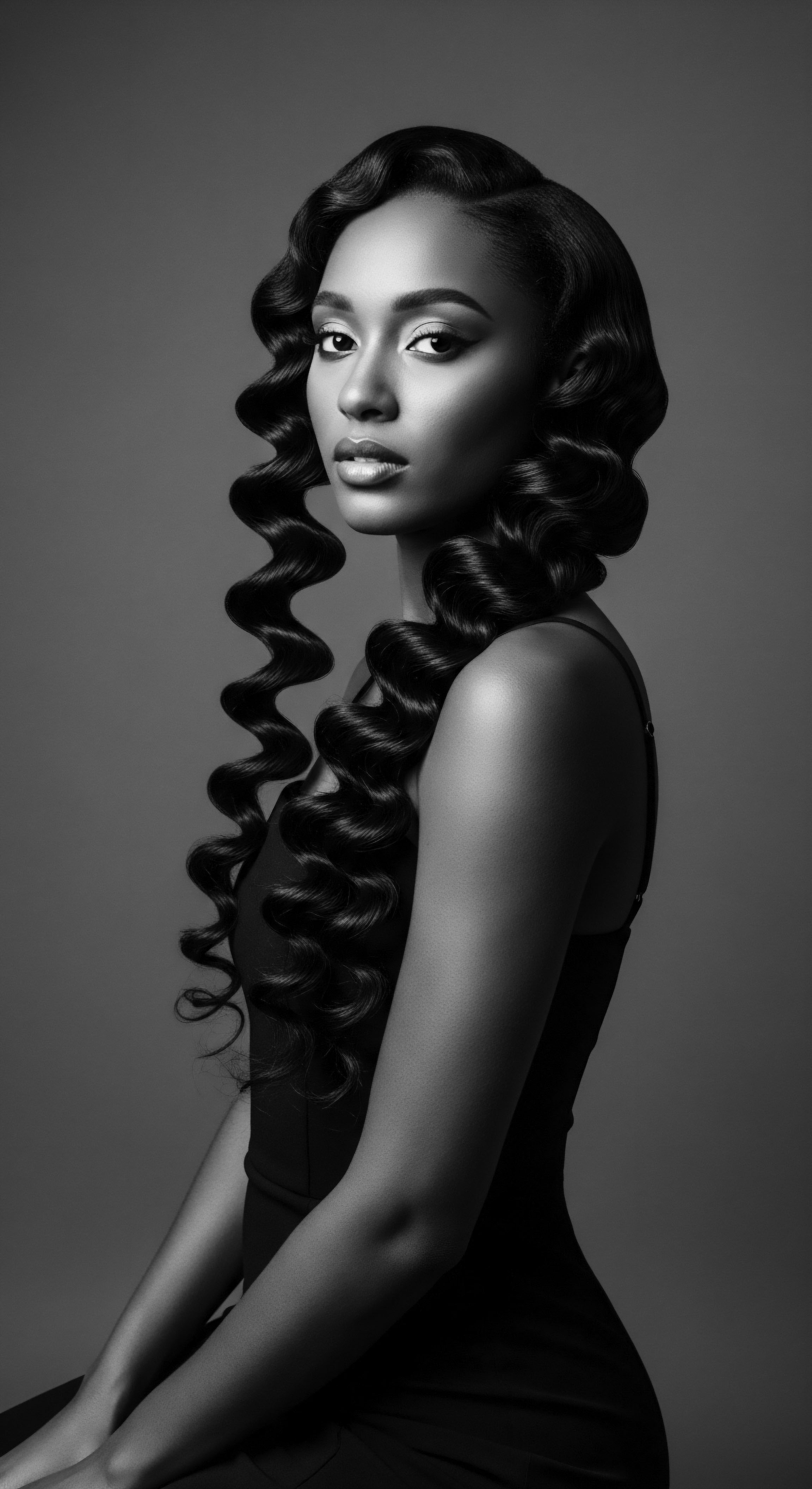
Reflection
The journey through ancestral hair oils and their capacity to hydrate textured strands is more than a technical exploration; it is a profound meditation on memory, resilience, and the enduring spirit of heritage. From the molecular dance of fatty acids on a raised cuticle to the communal warmth of shared oiling rituals, we perceive a continuous narrative. This is the story of hair as a living archive, each coil and curve holding echoes of the hands that tended it through generations, the wisdom of the earth that nourished the plants, and the communities that preserved these precious practices.
In every drop of ancestral oil, we find not just hydration, but a legacy. It is a legacy of observation, ingenuity, and profound care, passed down through the ages. The very act of applying these oils today links us to those who came before, affirming a continuity that defies time and distance. It is an act of reclamation, a conscious choice to honor the pathways carved by our ancestors, pathways that understood the unique needs of our hair and provided holistic solutions long before science articulated the ‘how.’ This connection to heritage, through the simple yet profound act of oiling, transforms a routine into a reverence, making each strand a testament to a soul that remembers its source.
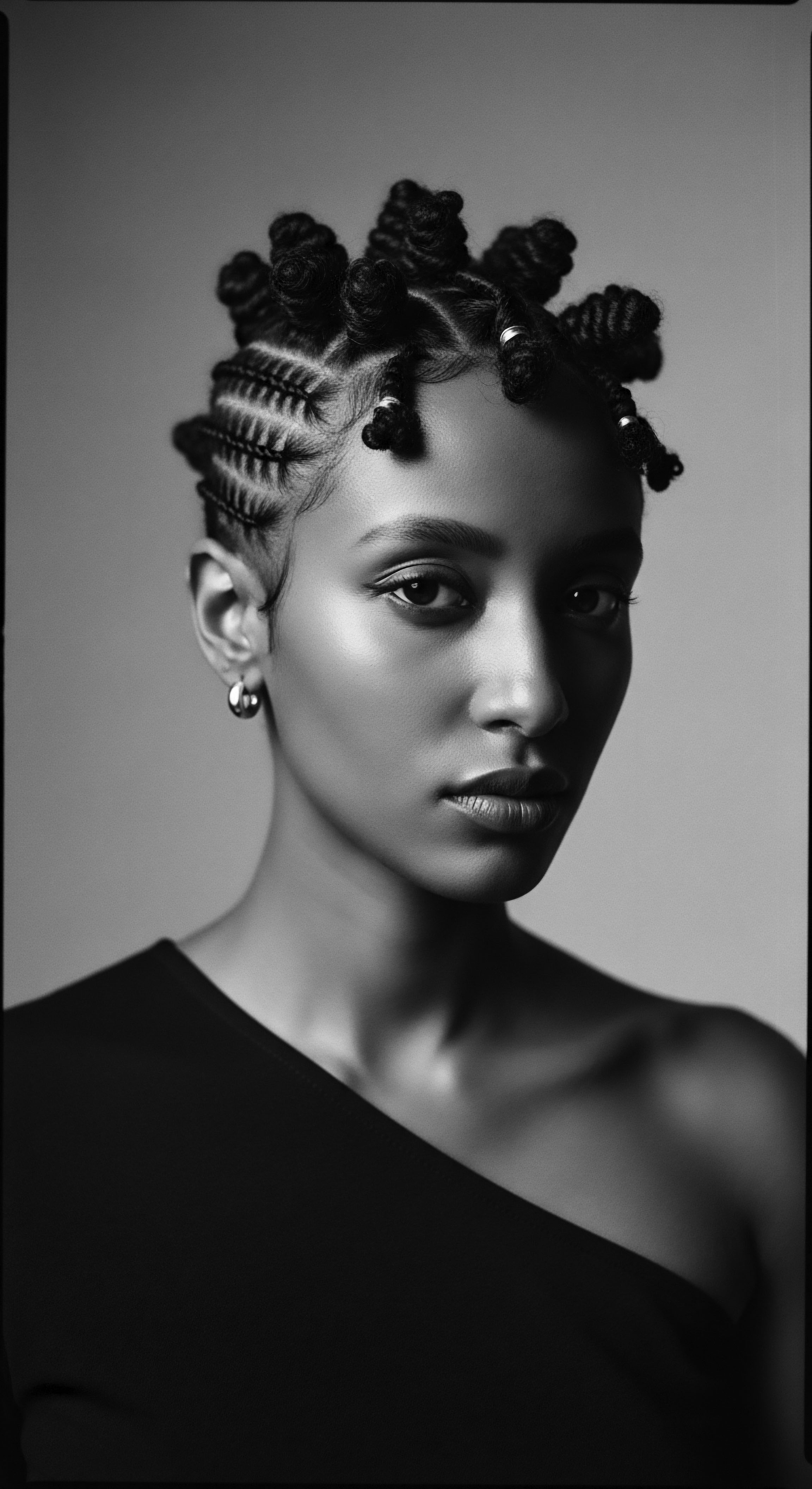
References
- Chisato, T. (2017). African Hair ❉ Culture, Beauty, and Struggles. Hachipublishing.
- Rele, V. G. & Mohile, R. B. (2003). Effect of mineral oil, sunflower oil, and coconut oil on prevention of hair damage. Journal of Cosmetic Science, 54(2), 175-192.
- Ajani, F. et al. (2020). African Ethnobotany ❉ A Source of Novel Cosmetic Ingredients. CRC Press.
- Guerin, K. (2018). Hair Story ❉ Untangling the Roots of Black Hair in America. St. Martin’s Press.
- Byrd, A. D. & Tharps, L. L. (2014). Hair Story ❉ Untangling the Roots of Black Hair in America. St. Martin’s Press.
- Diaw, M. N. (2021). Traditional Hair Care Practices in West Africa. Academic Press.
- Akanbi, B. O. (2019). The Science of Black Hair ❉ A Comprehensive Guide to Textured Hair. CreateSpace Independent Publishing Platform.
